Christos Liaskos
Realizing RF Wavefront Copying with RIS for Future Extended Reality Applications
Jun 11, 2024



Abstract:Lately a new approach to Extended Reality (XR), denoted as XR-RF, has been proposed which is realized by combining Radio Frequency (RF) Imaging and programmable wireless environments (PWEs). RF Imaging is a technique that aims to detect geometric and material features of an object through RF waves. On the other hand, the PWE focuses on the the conversion of the wireless RF propagation in a controllable, by software, entity through the utilization of Reconfigurable Intelligent Surfaces (RISs), which can have a controllable interaction with impinging RF waves. In that sense, this dynamic synergy leverages the potential of RF Imaging to detect the structure of an object through RF wavefronts and the PWE's ability to selectively replicate those RF wavefronts from one spatial location to wherever an XR-RF mobile user is presently located. Then the captured wavefront, through appropriate hardware, is mapped to the visual representation of the object through machine learning models. As a key aspect of the XR-RF's system workflow is the wavefront copying mechanism, this work introduces a new PWE configuration algorithm for XR-RF. Moreover, it is shown that the waveform replication process inevitably yields imprecision in the replication process. After statistical analysis, based on simulation results, it is shown that this imprecision can be effectively modeled by the gamma distribution.
An Open Platform for Simulating the Physical Layer of 6G Communication Systems with Multiple Intelligent Surfaces
Nov 03, 2022Abstract:Reconfigurable Intelligent Surfaces (RIS) constitute a promising technology that could fulfill the extreme performance and capacity needs of the upcoming 6G wireless networks, by offering software-defined control over wireless propagation phenomena. Despite the existence of many theoretical models describing various aspects of RIS from the signal processing perspective (e.g., channel fading models), there is no open platform to simulate and study their actual physical-layer behavior, especially in the multi-RIS case. In this paper, we develop an open simulation platform, aimed at modeling the physical-layer electromagnetic coupling and propagation between RIS pairs. We present the platform by initially designing a basic unit cell, and then proceeding to progressively model and simulate multiple and larger RISs. The platform can be used for producing verifiable stochastic models for wireless communication in multi-RIS deployments, such as vehicle-to-everything (V2X) communications in autonomous vehicles and cybersecurity schemes, while its code is freely available to the public.
Radiation pattern prediction for Metasurfaces: A Neural Network based approach
Jul 15, 2020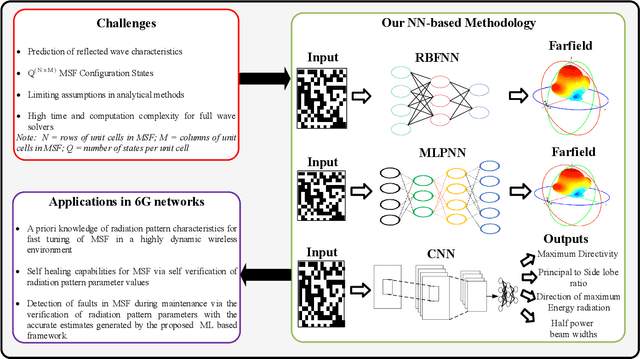
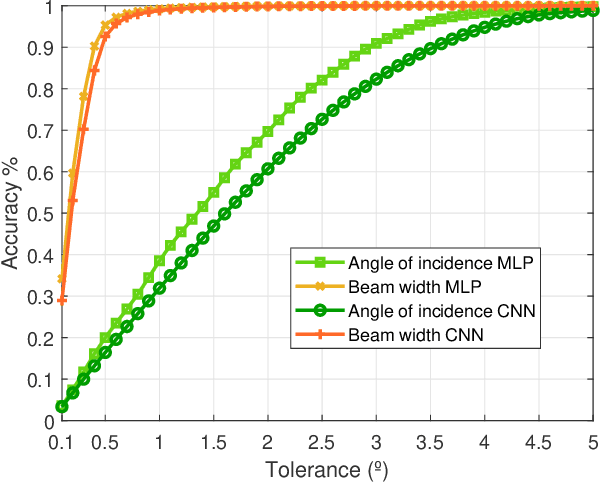
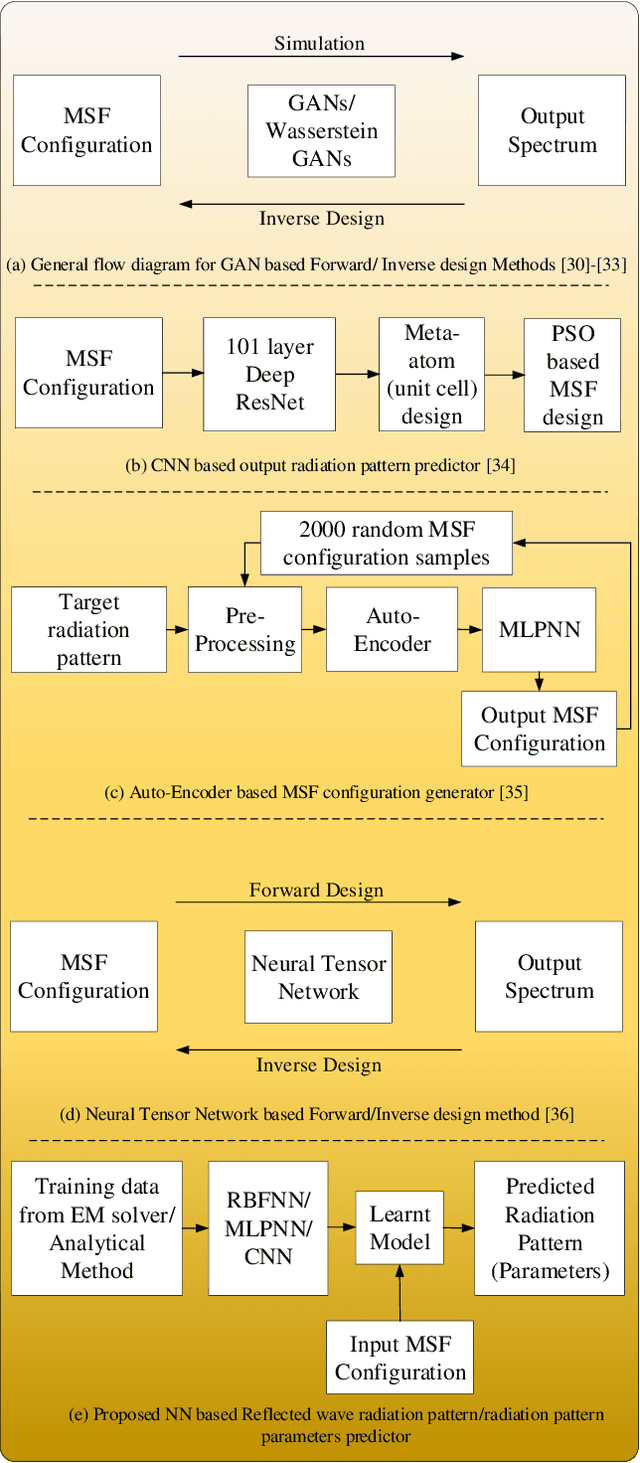
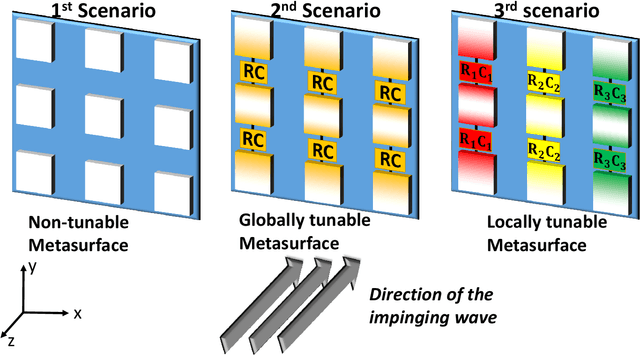
Abstract:As the current standardization for the 5G networks nears completion, work towards understanding the potential technologies for the 6G wireless networks is already underway. One of these potential technologies for the 6G networks are Reconfigurable Intelligent Surfaces (RISs). They offer unprecedented degrees of freedom towards engineering the wireless channel, i.e., the ability to modify the characteristics of the channel whenever and however required. Nevertheless, such properties demand that the response of the associated metasurface (MSF) is well understood under all possible operational conditions. While an understanding of the radiation pattern characteristics can be obtained through either analytical models or full wave simulations, they suffer from inaccuracy under certain conditions and extremely high computational complexity, respectively. Hence, in this paper we propose a novel neural networks based approach that enables a fast and accurate characterization of the MSF response. We analyze multiple scenarios and demonstrate the capabilities and utility of the proposed methodology. Concretely, we show that this method is able to learn and predict the parameters governing the reflected wave radiation pattern with an accuracy of a full wave simulation (98.8%-99.8%) and the time and computational complexity of an analytical model. The aforementioned result and methodology will be of specific importance for the design, fault tolerance and maintenance of the thousands of RISs that will be deployed in the 6G network environment.
An Interpretable Neural Network for Configuring Programmable Wireless Environments
May 07, 2019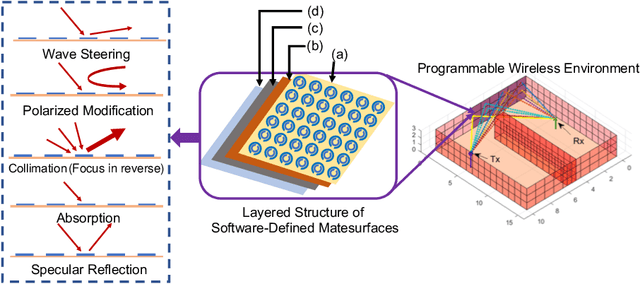
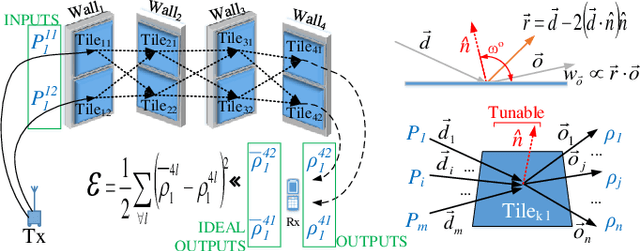
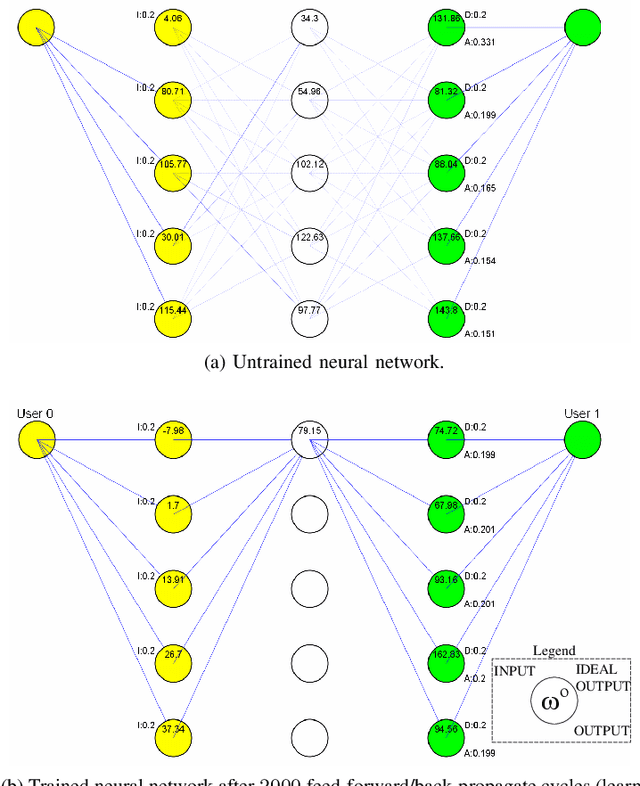
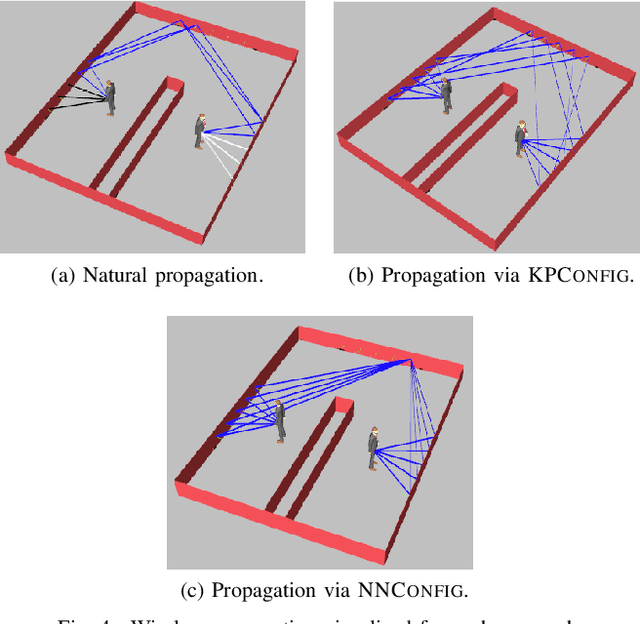
Abstract:Software-defined metasurfaces (SDMs) comprise a dense topology of basic elements called meta-atoms, exerting the highest degree of control over surface currents among intelligent panel technologies. As such, they can transform impinging electromagnetic (EM) waves in complex ways, modifying their direction, power, frequency spectrum, polarity and phase. A well-defined software interface allows for applying such functionalities to waves and inter-networking SDMs, while abstracting the underlying physics. A network of SDMs deployed over objects within an area, such as a floorplan walls, creates programmable wireless environments (PWEs) with fully customizable propagation of waves within them. This work studies the use of machine learning for configuring such environments to the benefit of users within. The methodology consists of modeling wireless propagation as a custom, interpretable, back-propagating neural network, with SDM elements as nodes and their cross-interactions as links. Following a training period the network learns the propagation basics of SDMs and configures them to facilitate the communication of users within their vicinity.
 Add to Chrome
Add to Chrome Add to Firefox
Add to Firefox Add to Edge
Add to Edge